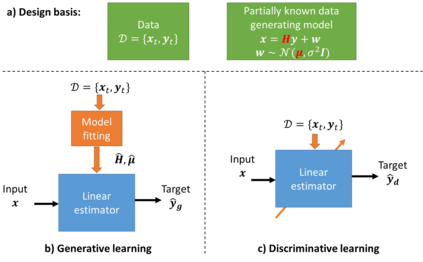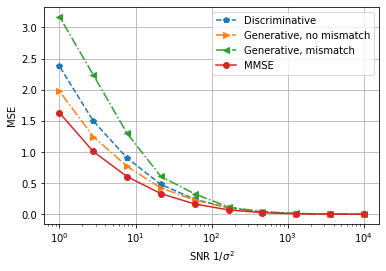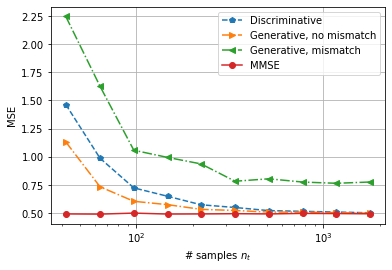Inference tasks in signal processing are often characterized by the availability of reliable statistical modeling with some missing instance-specific parameters. One conventional approach uses data to estimate these missing parameters and then infers based on the estimated model. Alternatively, data can also be leveraged to directly learn the inference mapping end-to-end. These approaches for combining partially-known statistical models and data in inference are related to the notions of generative and discriminative models used in the machine learning literature, typically considered in the context of classifiers. The goal of this lecture note is to introduce the concepts of generative and discriminative learning for inference with a partially-known statistical model. While machine learning systems often lack the interpretability of traditional signal processing methods, we focus on a simple setting where one can interpret and compare the approaches in a tractable manner that is accessible and relevant to signal processing readers. In particular, we exemplify the approaches for the task of Bayesian signal estimation in a jointly Gaussian setting with the mean-squared error (MSE) objective, i.e., a linear estimation setting.
翻译:信号处理中的推断任务往往以提供可靠的统计模型和某些缺失的具体实例参数为特征。一种常规方法使用数据来估计这些缺失参数,然后根据估计模型进行推算。另一种方法是,数据也可以被直接用来学习推论绘图端对端。这些将部分已知的统计模型和数据推论相结合的方法与机器学习文献中使用的基因化和歧视性模型的概念有关,通常在分类学中加以考虑。本演讲说明的目的是引入基因化和歧视性学习的概念,以便推断出一个部分已知的统计模型。虽然机器学习系统往往缺乏传统信号处理方法的可解释性,但我们侧重于一个简单的设置,使人们能够以易于理解和与信号处理读者相关的易懂的方式解释和比较这些方法。特别是,我们以中度误差(MSE)目标,即线性估计为共同设定的高斯语信号估算任务,我们举例说明了方法。







